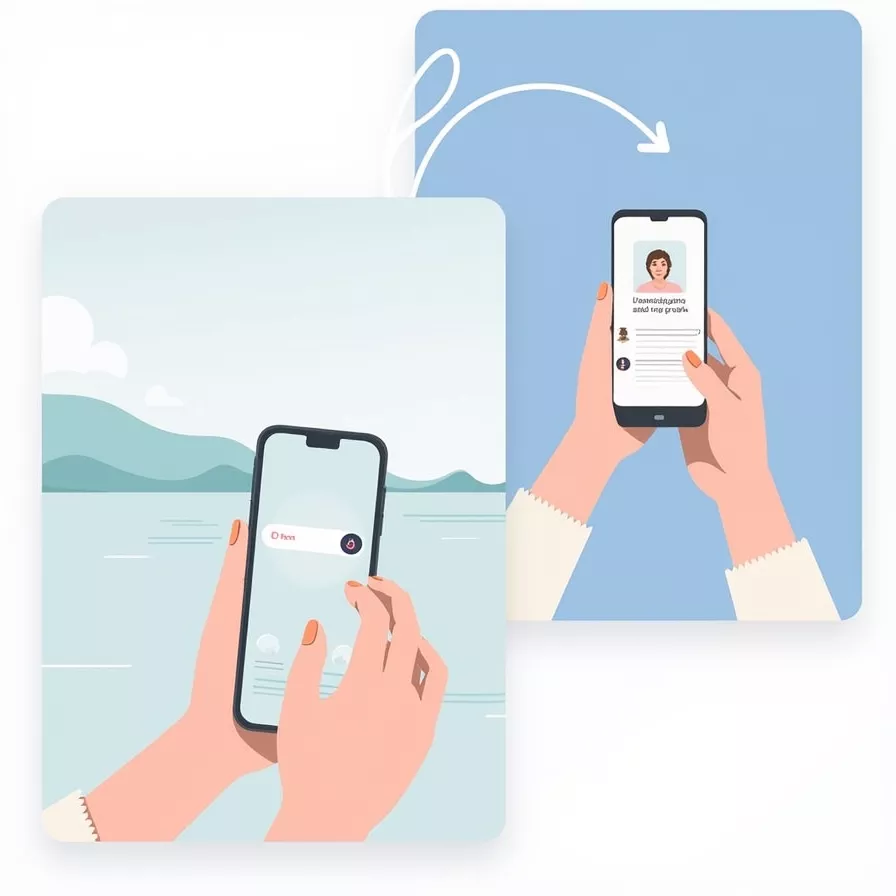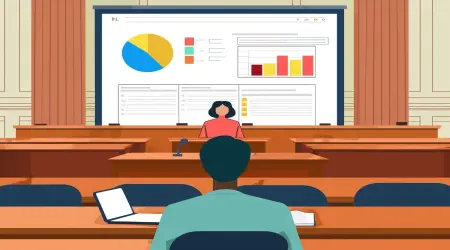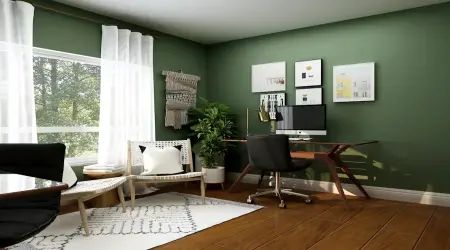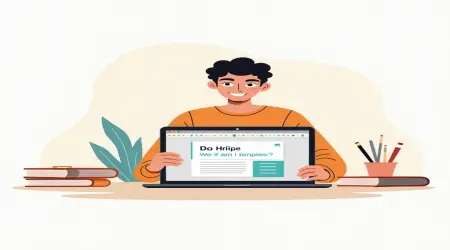TikTok's Meditation Feature: Tackling Lawsuits and Keeping Kids Safe
Introduction
Imagine it’s late at night, and a teen is scrolling through TikTok, lost in a sea of entertaining videos. Suddenly, a calming screen pops up, suggesting a guided meditation to help them chill out and get some sleep. That’s TikTok’s new meditation feature, which is set to roll out in 2025, focusing on promoting well-being for its users, especially the younger ones. This was announced on May 16, 2025, as TikTok deals with rising lawsuits and criticism about its potential negative effects on kids’ mental health.
With over a billion users every month, TikTok has become a major player in social media. However, its addictive nature has raised alarms about problems like anxiety, sleep troubles, and exposure to harmful content among children. States like Utah and New York have filed lawsuits claiming that the app's algorithms contribute to a mental health crisis. To tackle these issues, TikTok is introducing guided meditation sessions to help promote healthier habits. But is that really enough to get to the bottom of the problem? This guide on Temploop dives into the details of this new feature, its possible impact, and the broader challenges TikTok faces. Whether you’re a parent, user, or just curious about tech, you’ll get all the info you need right here.
So why is this important? The influence of social media on young people is a hot topic, and TikTok’s meditation feature might set a trend for how other platforms handle mental health issues. Let’s explore what this feature is all about, how it fits into the current legal landscape, and what it could mean for the future of social media.
Background on TikTok and Its Challenges
TikTok, which kicked off in 2016 thanks to ByteDance, has changed how we enjoy content with its short videos and smart algorithms. By 2024, it had snagged over a billion monthly users, a good chunk of them being teens. While its ability to keep users engaged is a big reason for its success, it also raises serious concerns about how it affects young people.
The Rise of TikTok
TikTok’s algorithm serves up personalized content that can keep users glued to their screens for ages. This has made it super popular among Gen Z, but it’s also raised eyebrows. Parents, teachers, and policymakers are increasingly worried about the app’s effects on mental health, especially as kids spend more time online.
Lawsuits and Criticism
TikTok is facing a bunch of lawsuits claiming it harms kids' mental health. In 2023, Utah filed a suit against TikTok, arguing that its addictive design contributes to anxiety and depression among young users, as reported by NPR. By 2024, 14 state attorneys general joined the fray, stating that features like beauty filters worsen body image issues. These legal actions spotlight concerns about:
- Addictive Design : Algorithms that prioritize keeping users engaged over their well-being.
- Harmful Content : Kids being exposed to inappropriate or harmful stuff.
- Data Privacy : Worries about user data being accessed by ByteDance or other companies.
A 2022 study in the Journal of Adolescent Health found that teens who spend over three hours on social media daily are at a higher risk of mental health problems. Another report by Common Sense Media showed that 70% of parents worry about their kids’ screen time on apps like TikTok.
Public and Regulatory Pressure
On top of lawsuits, TikTok is feeling the heat from the public and facing threats of regulation. In 2024, a new U.S. law requires TikTok to cut ties with ByteDance by January 2025 or risk a ban, as noted by NPR. Around the world, countries like Australia and those in the EU are pushing for stricter social media regulations to protect minors.
Details of TikTok’s Meditation Feature
TikTok’s meditation feature, which was revealed on May 16, 2025, aims to boost well-being with guided meditation sessions in the app. Here’s the lowdown:
What Is the Meditation Feature?
This feature offers short guided meditation sessions with calming visuals, soft music, and breathing exercises. It’s designed to help users relax and cut down on late-night scrolling, especially after 10 p.m. According to TechCrunch, TikTok tested this out with select teens earlier in 2025 and is now rolling it out to all users.
How Does It Work?
For users under 18, the feature is turned on by default. If a teen is using TikTok after 10 p.m., their feed may get interrupted with a full-screen prompt suggesting meditation. This prompt features:
- Visuals : Relaxing animations or nature scenes.
- Audio : Soft music and guided breathing instructions.
- Duration : Short sessions that usually last 2-5 minutes to help them wind down.
Adults can enable this feature in their app settings. If they ignore it, a second prompt may pop up reminding them to get some sleep, according to NBC Connecticut.
Target Audience and Implementation
While the feature is open to all users, it’s aimed at teens under 18, showing TikTok’s commitment to addressing mental health issues among youth. It’s part of a larger set of well-being tools, including time management features and content filters, to help lessen the app’s negative impact.
Analyzing the Feature’s Effectiveness
Can a meditation feature really make a difference? Let’s look at the potential benefits and the limitations.
Potential Benefits
- Better Sleep Quality : By encouraging users to take a break from scrolling and meditate, this feature might help reduce blue light exposure that messes with sleep. A 2023 study in Sleep Medicine found that meditation can lead to better sleep for teens.
- Less Stress : Meditation can help lower stress and anxiety. Research from the American Psychological Association supports this, making it a useful tool for young users.
- Positive Vibe : This feature shows that TikTok cares about user well-being, which could help improve its public image.
For instance, a teen who struggles with late-night scrolling might find the meditation prompts a helpful nudge to relax, leading to better sleep habits.
Criticisms and Limitations
Critics say the feature doesn’t tackle TikTok’s main issues:
- Surface Solution : The addictive algorithm and harmful content are still there, as noted by NPR.
- Opt-Out Option : Teens can turn off the feature, which limits its effectiveness, according to TechCrunch.
- PR Stunt : Some suspect this is more about reacting to lawsuits than actually fixing problems, as per News.Az.
Compared to Instagram’s “Take a Break” or YouTube’s bedtime reminders, TikTok’s meditation feature is more interactive but still doesn’t bring about the necessary system changes, like better moderation of content.
Legal and Ethical Implications
TikTok’s meditation feature shows up at a time when the platform is facing serious legal challenges.
Addressing Legal Concerns
This new feature might help TikTok show that it’s taking steps to tackle mental health issues in court. But the lawsuits are really focused on deeper concerns like algorithm design and data privacy, which this feature doesn’t really address. California's Attorney General highlighted TikTok’s manipulative features, according to NPR.
Ethical Responsibilities
Social media platforms have a duty to keep users safe, especially kids. While the meditation feature is a step in the right direction, critics are calling for:
- Better Content Moderation : More effective filtering of harmful content.
- Age Verification : Making sure experiences are appropriate for different ages.
- Transparency : Clearer policies on how data is used.
The ethical debate revolves around balancing profit-driven engagement with user safety, which is something TikTok is going to have to figure out.
User Reception and Feedback
Initial feedback on the meditation feature has been mixed:
- Positive Reception : Some parents appreciate the focus on teen well-being. They’re saying nice things about the calming design that keep popping up on social media.
- Skepticism : Users and experts are questioning how effective it really is, pointing to the option to opt-out and the unchanged algorithms, as per NBC DFW.
- Privacy Worries : Some are concerned about whether TikTok collects data during meditation sessions, though TikTok insists it’s not tracking that info.
A 2024 Common Sense Media survey found that 60% of teens are open to wellness features, signaling interest but also highlighting the need for trust.
Future Outlook
This meditation feature could change the social media game:
- Trends in the Industry : Platforms like Instagram might jump on the wellness feature bandwagon, creating a new standard.
- Changes in Regulation : Stricter laws, like the U.S. divestment requirement, could push TikTok to innovate even more.
- More Features : TikTok may roll out additional tools, like better parental controls or AI-based content filters.
As governments push for better safety for kids, all eyes will be on TikTok’s efforts.
Conclusion
TikTok’s meditation feature is a significant step towards addressing concerns about its impact on kids' mental health, but it’s not the whole solution. While it offers potential benefits like improved sleep and less stress, it doesn’t dive into the root problems leading to lawsuits and criticism, like addictive algorithms or harmful content. For parents, users, and regulators, this feature is just the tip of the iceberg, and more substantial changes need to happen. Keep up with Temploop for the latest news on social media trends and safety.
Frequently Asked Questions (FAQs)
- What is TikTok’s meditation feature?
A tool that provides guided meditation exercises with calming visuals and breathing prompts to help improve sleep and lessen stress, particularly for teens. - Who can use the meditation feature?
It’s available to everyone, but it’s turned on by default for users under 18 after 10 p.m. - How does the feature work?
It interrupts the For You feed during late-night hours with meditation prompts, encouraging users to relax and sleep. - Does it address TikTok’s legal challenges?
It shows an effort to promote well-being, but lawsuits focus on deeper issues like algorithm addiction that it doesn’t fully solve. - Are there similar features on other platforms?
Yep, Instagram has “Take a Break” and YouTube has bedtime reminders to cut down on screen time, but TikTok’s feature is more hands-on. - How have users responded to the feature?
Reactions are mixed; while some parents think it’s great, others feel it falls short or is just a PR move. - Can users turn off the meditation prompts?
Yes, teens can choose to opt out, and adults can decide not to enable it. - Does TikTok track meditation usage?
TikTok says it doesn’t collect data from these sessions, but privacy worries still linger. - What other steps is TikTok taking for child safety?
They have family pairing tools and content moderation, along with age restrictions, but some folks want more action. - Will this feature change social media trends?
It might inspire other platforms to adopt wellness features, but real systemic tweaks are needed for real change.










